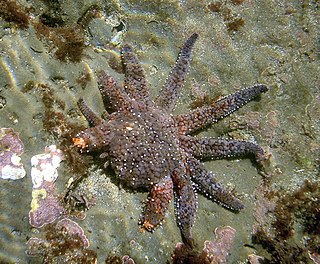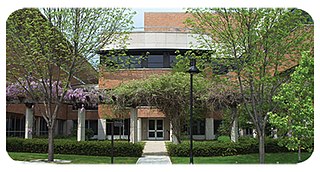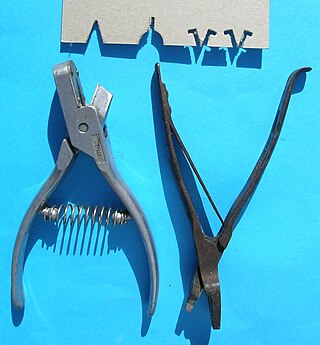Related Research Articles

With physical trauma or disease suffered by an organism, healing involves the repairing of damaged tissue(s), organs and the biological system as a whole and resumption of (normal) functioning. Medicine includes the process by which the cells in the body regenerate and repair to reduce the size of a damaged or necrotic area and replace it with new living tissue. The replacement can happen in two ways: by regeneration in which the necrotic cells are replaced by new cells that form "like" tissue as was originally there; or by repair in which injured tissue is replaced with scar tissue. Most organs will heal using a mixture of both mechanisms.
Inbred strains are individuals of a particular species which are nearly identical to each other in genotype due to long inbreeding. A strain is inbred when it has undergone at least 20 generations of brother x sister or offspring x parent mating, at which point at least 98.6% of the loci in an individual of the strain will be homozygous, and each individual can be treated effectively as clones. Some inbred strains have been bred for over 150 generations, leaving individuals in the population to be isogenic in nature. Inbred strains of animals are frequently used in laboratories for experiments where for the reproducibility of conclusions all the test animals should be as similar as possible. However, for some experiments, genetic diversity in the test population may be desired. Thus outbred strains of most laboratory animals are also available, where an outbred strain is a strain of an organism that is effectively wildtype in nature, where there is as little inbreeding as possible.

The laboratory mouse or lab mouse is a small mammal of the order Rodentia which is bred and used for scientific research or feeders for certain pets. Laboratory mice are usually of the species Mus musculus. They are the most commonly used mammalian research model and are used for research in genetics, physiology, psychology, medicine and other scientific disciplines. Mice belong to the Euarchontoglires clade, which includes humans. This close relationship, the associated high homology with humans, their ease of maintenance and handling, and their high reproduction rate, make mice particularly suitable models for human-oriented research. The laboratory mouse genome has been sequenced and many mouse genes have human homologues. Lab mice sold at pet stores for snake food can also be kept as pets.

In biology, regeneration is the process of renewal, restoration, and tissue growth that makes genomes, cells, organisms, and ecosystems resilient to natural fluctuations or events that cause disturbance or damage. Every species is capable of regeneration, from bacteria to humans. Regeneration can either be complete where the new tissue is the same as the lost tissue, or incomplete after which the necrotic tissue becomes fibrosis.
Denise Louise Faustman is an American physician and medical researcher. An associate professor of medicine at Harvard University and director of the Immunobiology Laboratory at Massachusetts General Hospital, her work specializes in diabetes mellitus type 1 and other autoimmune diseases. She has worked at Massachusetts General Hospital in Boston since 1985.

Fukuyama congenital muscular dystrophy (FCMD) is a rare, autosomal recessive form of muscular dystrophy (weakness and breakdown of muscular tissue) mainly described in Japan but also identified in Turkish and Ashkenazi Jewish patients; fifteen cases were first described on 1960 by Dr. Yukio Fukuyama.

Laboratory rats or lab rats are strains of the subspecies Rattus norvegicus domestica which are bred and kept for scientific research. While less commonly used for research than laboratory mice, rats have served as an important animal model for research in psychology and biomedical science.
Non-obese diabetic or NOD mice, like biobreeding rats, are used as an animal model for type 1 diabetes. Diabetes develops in NOD mice as a result of insulitis, a leukocytic infiltrate of the pancreatic islets. The onset of diabetes is associated with a moderate glycosuria and a non-fasting hyperglycemia. It is recommended to monitor for development of glycosuria from 10 weeks of age; this can be carried out using urine glucose dipsticks. NOD mice will develop spontaneous diabetes when left in a sterile environment. The incidence of spontaneous diabetes in the NOD mouse is 60–80% in females and 20–30% in males. Onset of diabetes also varies between males and females: commonly, onset is delayed in males by several weeks. The mice are known to carry IgG2c allele.

C57BL/6, often referred to as "C57 black 6", "B6", "C57" or "black 6", is a common inbred strain of laboratory mouse.

The autoimmune regulator (AIRE) is a protein that in humans is encoded by the AIRE gene. It is a 13kb gene on chromosome 21q22.3 that has 545 amino acids. AIRE is a transcription factor expressed in the medulla of the thymus. It is part of the mechanism which eliminates self-reactive T cells that would cause autoimmune disease. It exposes T cells to normal, healthy proteins from all parts of the body, and T cells that react to those proteins are destroyed.

Ellen Heber-Katz is an American immunologist and regeneration biologist who is a professor at Lankenau Institute for Medical Research (LIMR). She discovered that the Murphy Roths Large (MRL) mouse strain can regenerate wounds without scarring, and can fully restore damaged tissues. Her work on regeneration has been extended into National Cancer Institute (NCI)-funded studies of novel aspects of breast cancer causation. Her research interests include immunology, regenerative medicine and cancer.

A mesoangioblast is a type of progenitor cell that is associated with vasculature walls. Mesoangioblasts exhibit many similarities to pericytes, which are found in the small vessels. Mesoangioblasts are multipotent stem cells with the potential to progress down the endothelial or mesodermal lineages. Mesoangioblasts express the critical marker of angiopoietic progenitors, KDR (FLK1). Because of these properties, mesoangioblasts are a precursor of skeletal, smooth, and cardiac muscle cells along with endothelial cells. Research has suggested their application for stem cell therapies for muscular dystrophy and cardiovascular disease.

Lankenau Institute for Medical Research (LIMR), founded in 1927, is a nonprofit, biomedical research institute located on the campus of Lankenau Medical Center in Wynnewood, Pennsylvania, serving as the research division of the Main Line Health System in suburban Philadelphia. LIMR focuses on studies of cancer, cardiovascular, autoimmune, gastrointestinal and other diseases. It houses a center for population health research.
Biobreeding rat, also known as the BB or BBDP rat, is an inbred laboratory rat strain that spontaneously develops autoimmune Type 1 Diabetes. Like the NOD mice, BB rats are used as an animal model for Type 1 diabetes. The strain re-capitulates many of the features of human type 1 diabetes, and has contributed greatly to the research of T1D pathogenesis.
Certain sites of the mammalian body have immune privilege, meaning they are able to tolerate the introduction of antigens without eliciting an inflammatory immune response. Tissue grafts are normally recognised as foreign antigens by the body and attacked by the immune system. However, in immune privileged sites, tissue grafts can survive for extended periods of time without rejection occurring. Immunologically privileged sites include:
A NOG (NOD/Shi-scid/IL-2Rγnull) mouse is a new generation of severely immunodeficient mouse, developed by Central Institute for Experimental Animals (CIEA) in 2000. The NOG mouse accepts heterologous cells much more easily compared with any other type of immunodeficient rodent models, such as nude mouse and NOD/scid mouse. Thus, the mouse can be the best model as a highly efficient recipient of human cells to engraft, proliferate and differentiate. This unique feature offers a great opportunity for enhancing therapy researches of cancer, leukemia, visceral diseases, AIDS, and other human diseases. It also provides applications for cancer, infection, regeneration, and hematology researches.

An earmark is a cut or mark in the ear of livestock animals such as cattle, deer, pigs, goats, camels or sheep, made to show ownership, year of birth or sex.
Anti-nRNP is a type of antibody.
Kanneboyina Nagaraju is a medical scientist and immunologist who is credited with creating the MHC Class I transgenic mouse model for autoimmune myositis. Nagaraju is also credited with identifying novel glucocorticoid analogs with reduced side effect profiles in collaboration with Eric Hoffman and John McCall. He led international efforts to improve rigor and reproducibility of preclinical drug trials and phenotyping in neuromuscular disease models.

Robert K. Naviaux is an American physician-scientist who specializes in mitochondrial medicine and complex chronic disorders. He discovered the cause of Alpers syndrome, and was part of the team that reported the first mitochondrial DNA (mtDNA) mutation to cause genetic forms of autism. Naviaux proposed the cell danger response (CDR) and hyperpurinergia hypothesis for complex disorders in 2014 and directed the first FDA-approved clinical trial to study the safety and efficacy of the antipurinergic drug suramin as a new treatment for autism spectrum disorder (ASD).
References
- 1 2 3 Clark, Lise Desquenne; Clark, Robert K.; Heber-Katz, Ellen (July 1998). "A New Murine Model for Mammalian Wound Repair and Regeneration". Clinical Immunology and Immunopathology. 88 (1): 35–45. doi:10.1006/clin.1998.4519. ISSN 0090-1229. PMID 9683548. S2CID 3734804.
- 1 2 Heber-Katz, E.; Leferovich, J. M.; Bedelbaeva, K.; Gourevitch, D. (2004). "Spallanzani's mouse: a model of restoration and regeneration". Current Topics in Microbiology and Immunology. 280: 165–89. doi:10.1007/978-3-642-18846-6_5. ISBN 978-3-642-62321-9. PMID 14594211.
- ↑ Morelle, Rebecca (11 April 2006). "Mouse sheds light on regeneration". BBC News .
- ↑ Carswell, Lindsay (18 April 2006). "Self-healing Mice". ScienCentral News. Archived from the original on 20 October 2008.
- ↑ Heber-Katz, Ellen; Leferovich, John M.; Bedelbaeva, Khamilia (2001-12-01). "Spontaneous heart regeneration in adult MRL mice after cryoinjury". Gene Therapy and Regulation. 1 (4): 399–407. doi:10.1163/156855801760107055. ISSN 1568-5586.
- ↑ Heydemann, Ahlke; Swaggart, Kayleigh; Kim, Gene H; Holley-Cuthrell, Jenan; Hadhazy, Michele; McNally, Elizabeth M (2012). "The superhealing MRL background improves muscular dystrophy". Skeletal Muscle. 2 (1): 26. doi: 10.1186/2044-5040-2-26 . ISSN 2044-5040. PMC 3534636 . PMID 23216833.
- ↑ Mull, Aaron J.; Berhanu, Tirsit K.; Roberts, Nathan W.; Heydemann, Ahlke (December 2014). "The Murphy Roths Large (MRL) mouse strain is naturally resistant to high fat diet-induced hyperglycemia". Metabolism. 63 (12): 1577–1586. doi:10.1016/j.metabol.2014.09.007. ISSN 0026-0495. PMC 4252560 . PMID 25308446.